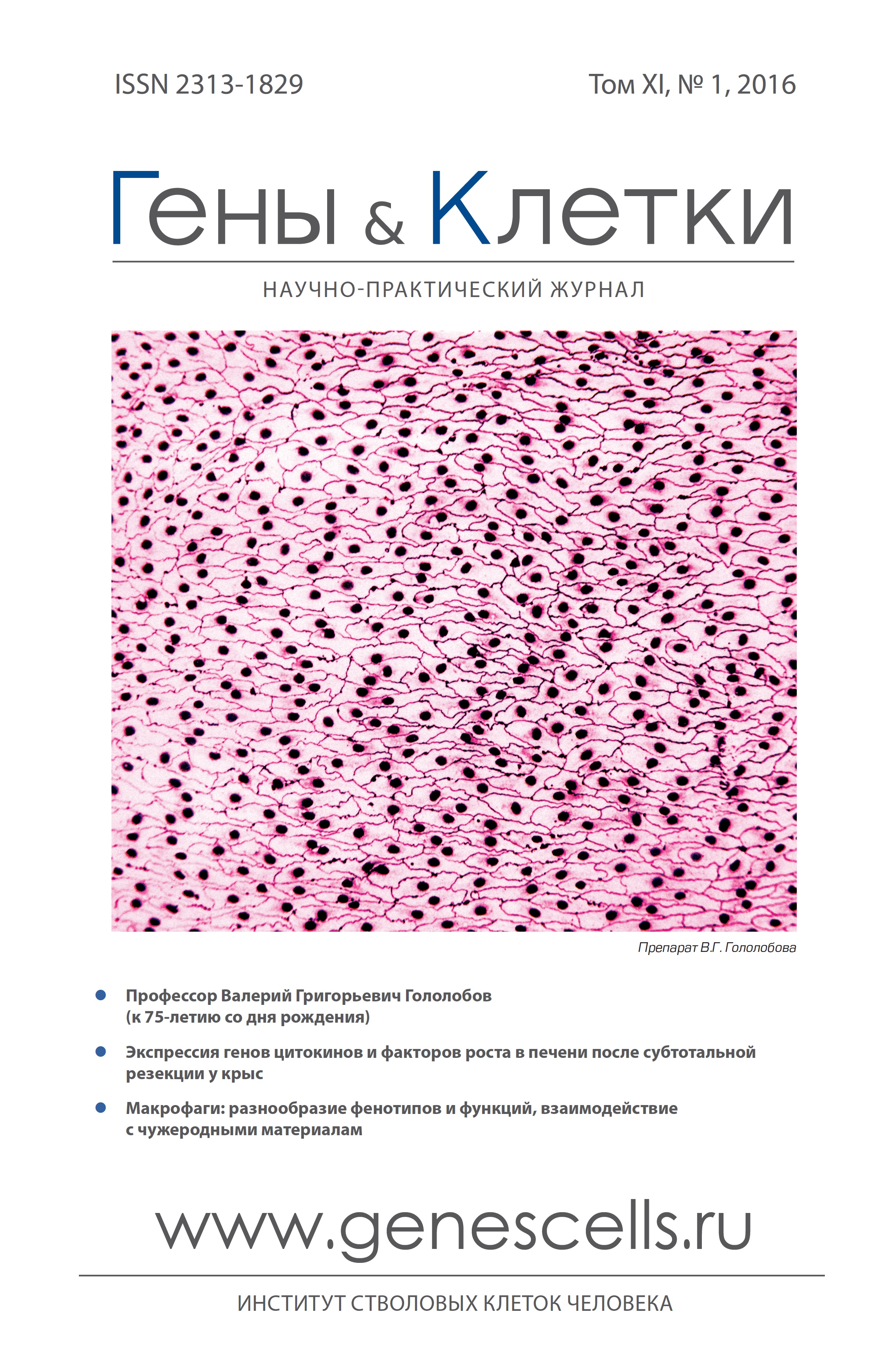Hepato-specific small-dispersioned matrix as the important component of implanted cell-engineering designs for an auxiliary liver
- Authors: Onischenko N.A1, Krasheninnikov M.E2, Shagidulin M.Y1,2, Bodrova M.M3, Sevastjanov V.I1, Gautier S.V1,2
-
Affiliations:
- Academican V.I. Shumakov Federal Research Center of Transplantology and Artificial Organs
- I.M. Sechenov First Moscow State Medical University
- M.V. Lomonosov Moscow State University
- Issue: Vol 11, No 1 (2016)
- Pages: 54-60
- Section: Articles
- URL: https://genescells.ru/2313-1829/article/view/120573
- DOI: https://doi.org/10.23868/gc120573
- ID: 120573
Cite item
Abstract
Full Text
About the authors
N. A Onischenko
Academican V.I. Shumakov Federal Research Center of Transplantology and Artificial Organs
Email: allanik64@yandex.ru
M. E Krasheninnikov
I.M. Sechenov First Moscow State Medical University
M. Y Shagidulin
Academican V.I. Shumakov Federal Research Center of Transplantology and Artificial Organs; I.M. Sechenov First Moscow State Medical University
M. M Bodrova
M.V. Lomonosov Moscow State University
V. I Sevastjanov
Academican V.I. Shumakov Federal Research Center of Transplantology and Artificial Organs
S. V Gautier
Academican V.I. Shumakov Federal Research Center of Transplantology and Artificial Organs; I.M. Sechenov First Moscow State Medical University
References
- Онищенко Н.А., Гулай Ю.С., Шагидулин М.Ю. и соавт. Разработка имплантируемых клеточно-инженерных конструкций вспомогательной печени для лечения печёночной недостаточности. Гены и клетки 2015; ХС1): 6-17.
- Karina H., Nakayama В.S., Batchelder C.A. et al. Decellularized Rhesus Monkey Kidney as a Three-Dimensional Scaffold for Renal Tissue Engineering. Tissue Engineering 2010 Part A; 16: 2207-16.
- Ott H.C., Matthiesen T.S., Goh S.K. et al. Perfusion-decellularized matrix: using nature's platform to engineer a bioartificial heart. Nat. Med. 2008; 14(2): 213-21.
- Сотниченко А.С., Губарева Е.В., Гилевич И.В. и соавт. Децеллюляризированный матрикс сердца крысы как основа создания тканеинженерного сердца. Клеточная трансплантология и тканевая инженерия 2013; 8(3): 86-94.
- Petersen T.H., Calle E.A., Colehour M.В. et al. Matrix composition and mechanics of decellularized lung scaffolds Cells Tissues Organs 2012; 195(3): 222-31.
- Baptista P.M., Siddiqui M.M., Lozier G. et al. The use of whole organ decellularization for the generation of a vascularized liver organoid. Hepatology 2011; 53(2): 604-17.
- Barakat O., Abbasi S., Rodriguez G. et al. Use of decellularized porcine liver for engineering humanized liver organ. J. Surg. Res. 2012; 173(1): 11-25.
- Baptista P.M., Vyas D., Moran E. et al. Human liver bioengineering using a whole liver decellularized bioscaffold Methods Mol. Biol. 2013; 1001: 289-98.
- Yagi H., Fukumitsu K., Fukuda K. et al. Human-scale whole-organ bioengineering for liver transplantation: a regenerative medicine approach. Cell Transplant. 2013; 22(2): 231-42.
- Uygun B.E., Soto-Gutierrez A., Yagi H. et al. Organ reengineering through development of a transplantable recellularized liver graft using decellularized liver matrix. Nat. Med. 2010; 16(7): 814-20.
- Готье С.В., Онищенко Н.А., Крашенинников М.Е. и соавт. Способ получения тканеспецифического матрикса для тканевой инженерии паренхиматозного органа. Патент РФ на изобр. №2539918. 21 января 2015.
- Li Y.S., Haran H.J., Hsieh D.K. et al. Cells and materials for liver tissue engineering. Cell transpl. 2013; 22(4): 685-700.
- Шагидулин М.Ю., Онищенко Н.А., Крашенинников М.Е. и др. Выживание клеток печени, иммобилизированных на 3-D матриксах, при моделировании печеночной недостаточности Вестник трансплантологии и искусственных органов 2011; XIII (3): 59-66
- Qi W., Johnson D.W., Vesey D.A. et al. Isolation, propagation and characterization of primary tubule cell culture from human kidney. Nephrology (Carlton) 2007; 12(2): 155-9.
- Шумаков В.И., Онищенко Н.А., редакторы. Биологические резервы клеток костного мозга и коррекция органных дисфункций Москва: Лавр; 2009
- Mosmann T. Rapid colorimetric assay for cellular growth and survival: application to proliferation and cytotoxicity assays. J. Immunol. Methods 1983; 65: 55-63.
- Atala A., Yoo J.J. Decellularisation for whole organ bioengineering Biomed. Mater. 2013; 8(1): 104-6.
- Воронкина И.В. Внеклеточный матрикс и его роль в регуляции клеточных функций В: Пинаев Г.П., Богданова М.С., редакторы Методы культивирования клеток СПб: Изд Политехнического университета; 2008. с. 72-83.
Supplementary files










